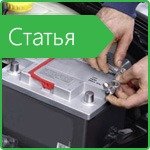What to do motorist if the battery is dead?
Battery — a source of energy that enables the engine start, and also supports various onboard electrical equipment. Serviceable battery is able to work without problems for quite a long time, but sometimes the battery may suddenly be discharged  .; The reasons for this can be quite a lot. Let's take a closer look, which can lead to premature battery discharge, and that at the same time make the car owner.
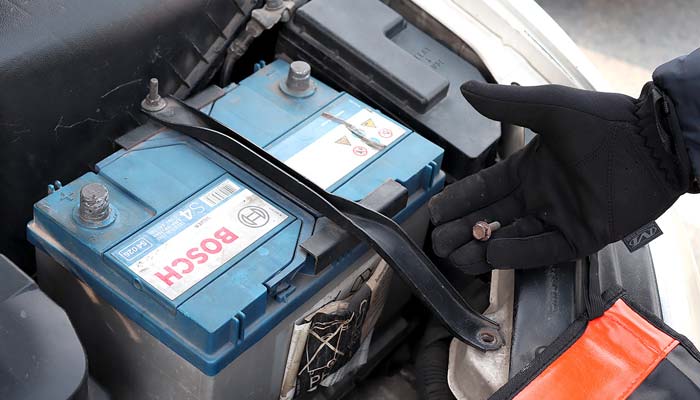
Why is the car battery is discharged?
The culprit may be the loss of voltage and malfunctions in equipment, is responsible for the power supply and starter battery itself. The battery performance will be affected by different factors, such as:
- level of wear (operating time);
- failure in the generator;
- a short circuit in the electrical circuit.
Even if everything correctly, then the problem may still occur. Remember that it is very greatly influenced by the weather and conditions of use of the vehicle. For example, at low temperature in winter CRA often does not have time to recover, since the energy consumption is increased at temperatures below zero, and the recovery is slower. Also, with frequent trips to the conditions of the city over short distances with frequent stops, the battery may not have enough time to replenish the energy lost after engine start-up, since the generator is just not enough time to return the battery to 100% working condition.
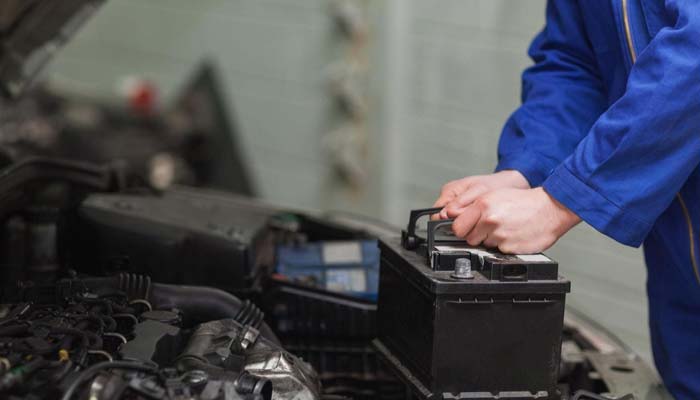
How to check the battery status?
To check the status of the battery it is necessary to switch off the engine and disconnect the battery from the on-board network, remove the terminals from the contacts.
For starters need to determine the density of the electrolyte by means of a hydrometer. Acceptable level, which indicates normal battery condition indicator is 1,26 – 1.28 g / cc. If it is lower, the charge is not complete.
Also, to determine the level of charge can use special tester or a multimeter. This device should be connected to the terminals of the batteries according to  .; power source charge level depending on the voltage indicator is thus:
- 100% — 12,8-12,9 Volt.
- 75% — 12,6-12,7 Volt.
- 50% — 12,2-12,3 Volt.
- 25% — 11,9-12,0 Volt.
If the tester indicates the voltage of 11.8 V or less, it means that the battery is fully discharged.
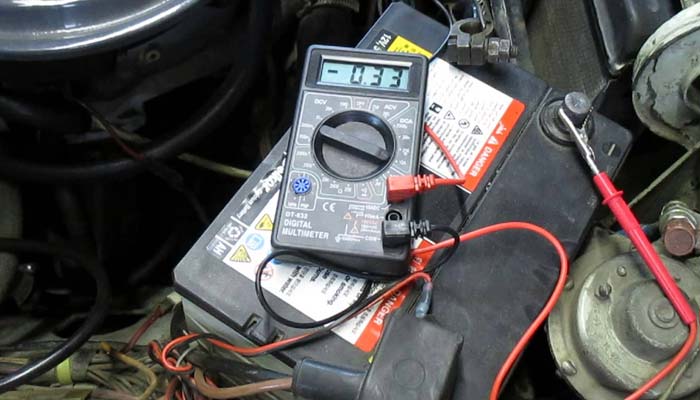
What if I went down the generator?
From the operability and serviceability of the generator depends on the restoration of energy of any car battery. That it is an element that generates electricity, which is necessary to restore the battery's memory. If something goes wrong, the fault should be eliminated as much as possible faster.
Check the status of the generator can use the tester. Contact measuring device must be added to the battery terminals. Measurements are made with the engine running. If the generator is defective, the device should show pressure at 14 -14.2 in.
For the complete test, it is recommended to load the generator as possible. To this should be included as much as possible consumers: stove, high beam headlights, dimensions, etc. At serviceable generator measuring rate should be not less than 13,8 – 13.9 in.
If the reading is below normal, it means that the generator that something is wrong. Often the reason is the low belt tension generator or heavy wear of brushes. Also note whether the terminals are not oxidized, or perhaps they are poorly tightened. Due to poor contact electricity can be supplied intermittently.
Check the operation of the generator is possible without a special device. To do this, start the engine, and then remove one of the terminals of the battery. If after such a manipulation of the car is not stalled, then the generator is serviceable and operating normally. Enable the maximum electrical and listen as the engine is running at idle. Turnovers normally should not fall. If there is a speed reduction is likely to generator operation have questions and it is necessary to conduct a more thorough diagnosis.
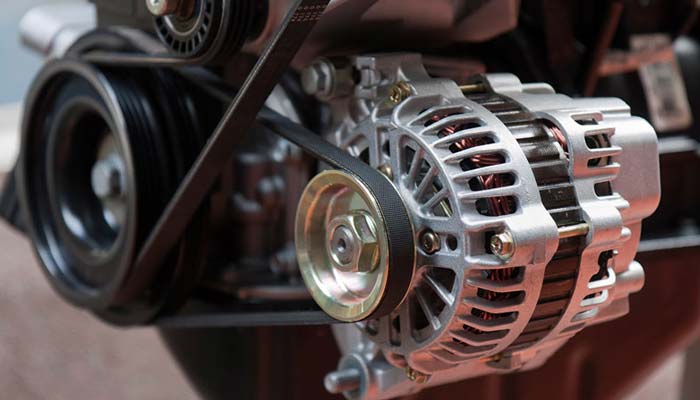
What to do in case of short-circuit in the circuit board?
Short-circuit (SC) can occur quite often and quite difficult to detect. For example, when a very active use of the machine, the battery simply does not have time to completely discharge, so the car owner may for a long time did not even suspect the existence of any fault.
The factor that provokes the circuit, there is the construction of the electrical circuit itself any of the vehicle. The system has poles, where the body, engine and all metal parts are minus. And at the moment of contact of the conductors with positive and negative charge short-circuiting occurs. And it can be observed in the wiring, as well as directly in various electrical equipment.
Identify the fault can be quite simple. To do this, turn off the ignition, then remove the « + » terminal and touch it to the « + » CRA concluded. If there is a spark, it is a sure sign that the circuit has a fault.
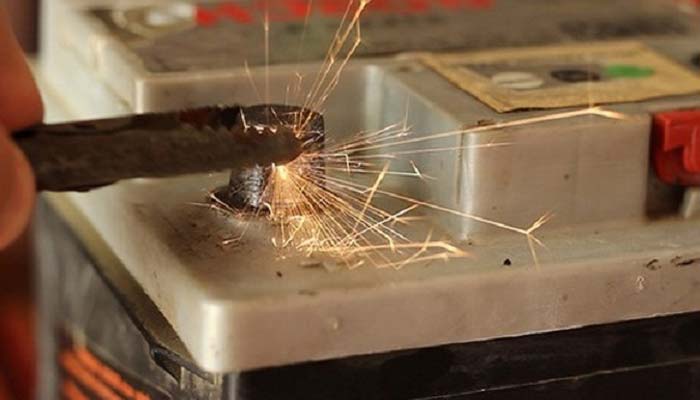
identify sources of leakage current
The current consumed is always, therefore, even working signaling and radio may cause current leakage. If it is small, the norm for the modern vehicle is about 0,02 — 0.06 And, there is nothing wrong with that. If the figure is higher, it is necessary to seek the source of the leak.
The measurements should be carried out only when the ignition is off. When this procedure is the following:
- On the tester switch is set at 10 A mode.
- Remove the battery negative terminal.
- To disconnect the cables, connect one lead of the multimeter.
- The second probe, connect to the negative battery terminal.
If the result on the display device leakage current shows higher than normal, you have to look for the chain section, where there is a loss, and discharge. To do this, remove the fuses one by one, while strictly controlling the tester performance. If after the removal of a fuse, the value fell sharply, then the problem of looking for it in the chain.
Remember, to get the most accurate results, it is necessary to check the fuses, because problems can be simultaneously in several circuits.
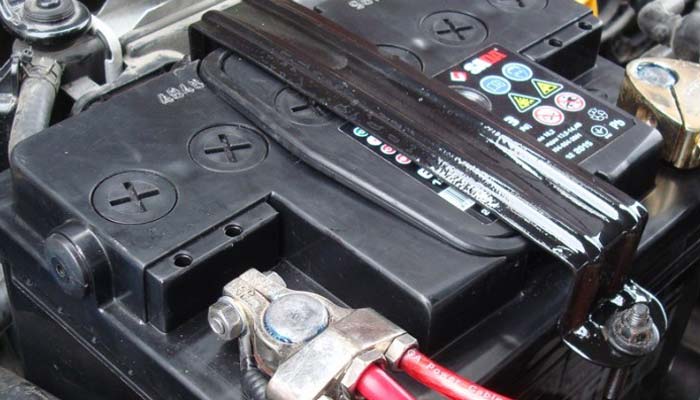
Battery villages that make the driver?
If the battery is suddenly stopped working, that is, for some reason the battery power to run the car engine was not enough, and urgently needs to go, the driver can start the car to try another method. All there are several options available:
- Start with the « pusher ». Here you can ask someone to tow the car to a cable or invite a few strong guys that can push. In this case, the engine is started on 2/3 after transfer acceleration car to a speed of 10-20 km / h.
- « Booster » — it is quite a popular method, when starting to happen with the donor car on which stands a charged battery and fully working. To implement this method, you must have in your arsenal of special wire for lighting with reliable crocodiles.
- Using a different battery. The method assumes that a working battery is taken from a neighbor, which is put in place and helps low battery to start the engine. After that, the batteries are swapped again. It was only necessary to be very careful and during manipulation avoid contact the positive battery terminal with metal vehicle body. This is important in order to prevent short circuit.
- Launch a special Pre-chargers. It's all very simple, if there is available charger with a start function, connect the device to a discharged battery and having passed through a large current sufficient to start-up, the driver will easily solve your problem.
These ways — this, of course, the only compulsory measures. Abusing them is not necessary, since in certain circumstances each of these options can hurt the car. Most often this occurs when non-compliance with certain rules. Sometimes this leads to a fault in the supply system or the output of the battery system.
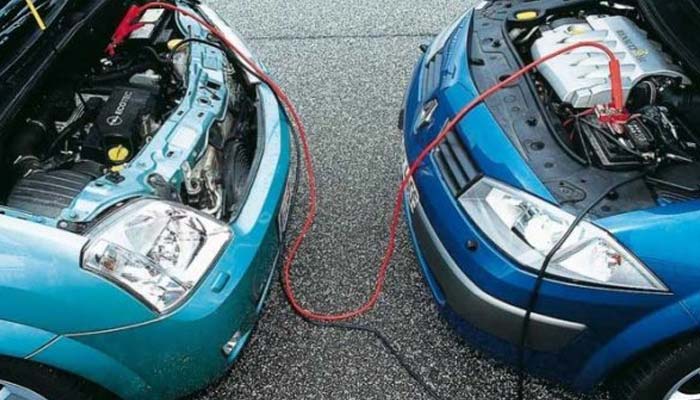
If your battery can no longer perform its task and can not cope with the start, then he has to look for a replacement. In the online store you can 130.com.ua buy battery in Kiev, Kharkov and Odessa, with delivery across Ukraine.
Related materials
Car batteries: Best Sellers

Stay tuned for updates!
Subscribe to our Telegram channel and be the first to receive useful materials.
Subscribe


























